Lenovo ThinkCentre M75n-IoT Internal View
The bottom cover is secured with two screws, and then it slides off. This is very easy to service and you can see the cover being removed in the accompanying video.
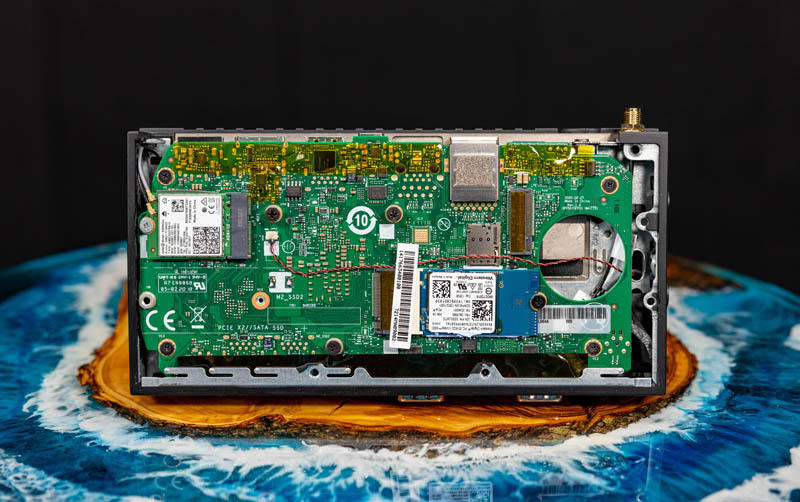
On the right side of the PCB we get a Western Digital SSD in a M.2 2242 slot. Two quick notes here, we had to take these photos with the system opposite the M90n IoT so you can use the unpopulated fan hole for orientation if you are comparing the two. Two examples of differences are that we do not get a large thermal pad here for the SSD. We also do not get the Realtek RTL8111 chip for the second NIC populated on the M75n IoT.
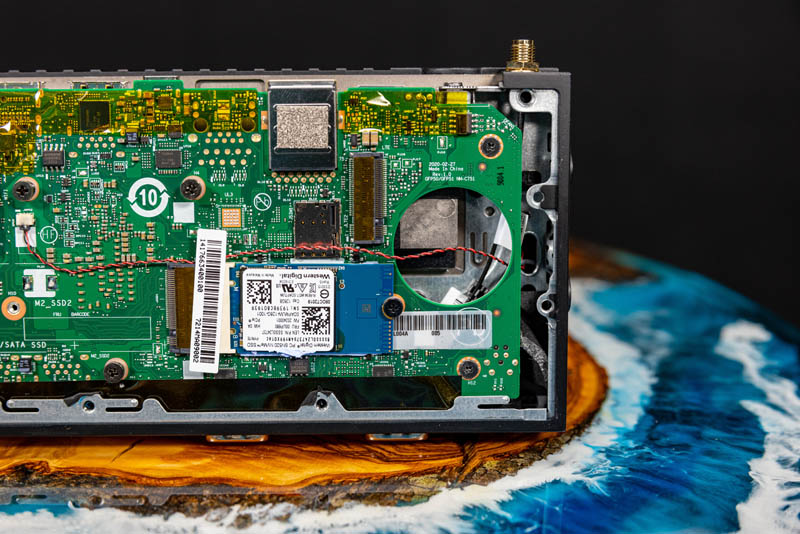
Another part one will notice here are the M.2 slot for a potential LTE card. There is even an onboard SIM slot. This side of the chassis also has hole pre-drilled for LTE antenna options.
This system has a feature many may not expect in that it has a second M.2 mounting point for a second SSD. This is a PCIe Gen3 x2 slot for NVMe SSDs or a M.2 SATA slot adding a nice bit of extra expandability.
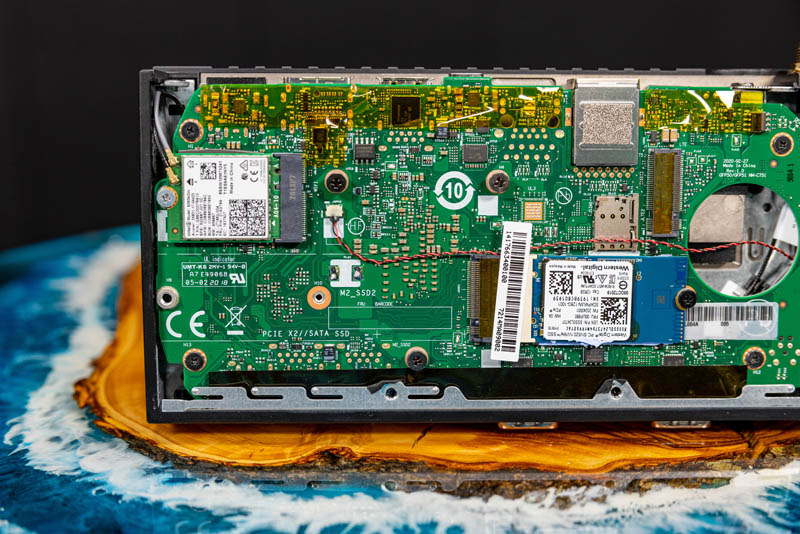
We can also see the Intel 9560NGW 802.11ac and Bluetooth 5.1 card that provides wireless access. Technically, this unit has two NICs, one wired, and one wireless. Still, we wish that Lenovo populated that second NIC slot.
When we reviewed the M90n IoT with the ultra-low-power Intel Core i3-8145U we said it was not a strong CPU. The M75n IoT is considerably slower with the AMD Athlon Silver 3050e. This is a dual-core, four-thread processor. What it loses in performance it also sheds in power since this is a 6W TDP CPU. Lenovo had to go with a low power option to passively cool the system.
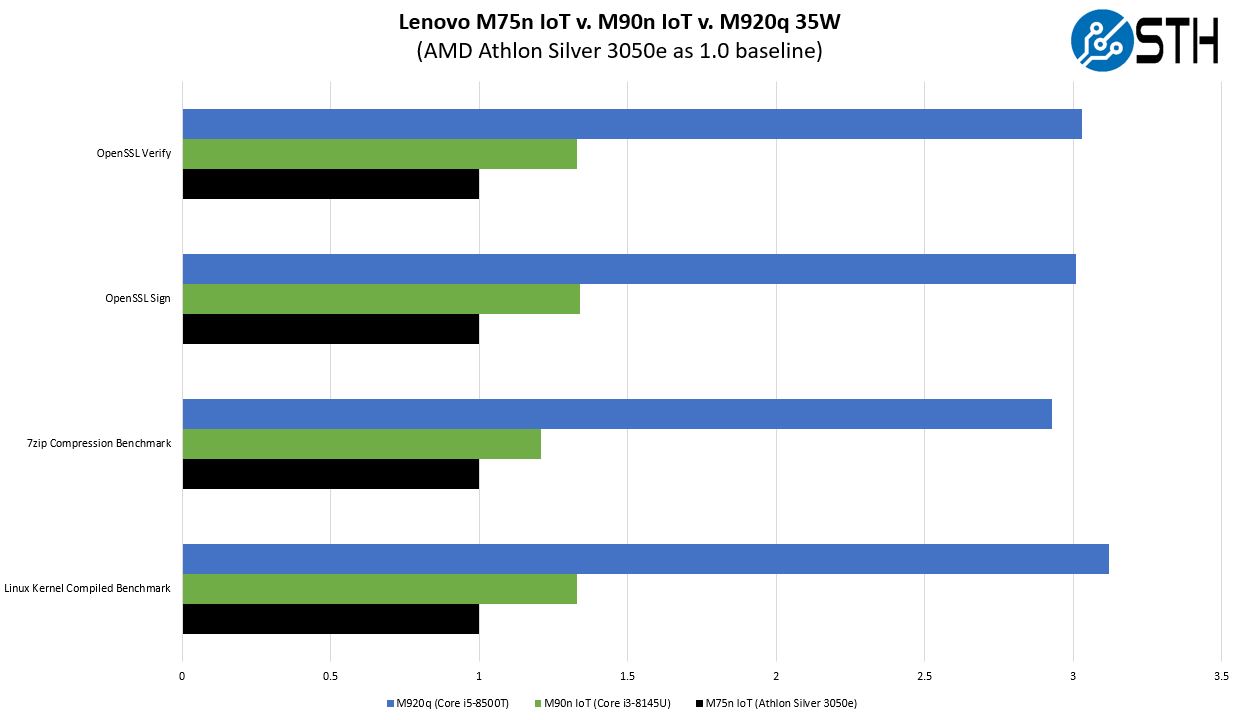
Just to give you some sense here, the 2C/4T 1.4GHz processor sacrifices a lot of performance. It can turbo up to 2.8GHz but that does not happen all of the time once it has been running and the chassis heats up. This low clock speed part is actually the efficiency leader, but while the 35W Project TinyMiniMicro nodes is a perfectly usable desktop, things fall off from there. The M90n IoT is slow enough to have notable lag when trying to launch web browsers and those types of tasks. Although it is lower power, the ~20-30% lower performance makes the M75n IoT not something I would personally want to use as a desktop.
On the other hand, if you want to have a box to control IoT devices such as manufacturing equipment or just connect to console ports of switches, then this is perfectly fine. It feels like that is the intended use case of this system, to provide control functions and then filter and package logs to upload to larger systems.
Another major downside to the platform is the RAM. There is only a total of 4GB of memory in this system. That memory is not in a standard SODIMM slot. Instead, it is soldered onto the motherboard making easy upgrades effectively impossible. This is perhaps the biggest shortcoming of this system over a TinyMiniMicro node. If it had even a single SODIMM slot where memory could be installed, that would make a big difference. It is also a primary reason why this and the M90n/ M75n Nano (non-IoT) we do not recommend as virtualization nodes except in very limited use cases. Project TinyMiniMicro nodes have faster CPUs and the capacity to get to higher RAM levels making them usually the better solution unless fanless operation and space are the primary drivers.
One benefit of this is ultra-low power consumption. At idle, this unit rivals the BMCs found on many Atom-based server motherboards when the server is powered off. As a trade-off, we do not get IPMI access.
Use Cases: The Good and Bad
First, the addition of COM ports means that this has a market. The Project TinyMiniMicro nodes often have COM ports, but this is a lower-power fan-less option if you just need serial ports for data collection/ processing or even just to serve as console access to devices. A great use case is ingesting data from a sensor and parsing/ compressing logs directly on this device to limit the amount of data that needs to be uploaded.
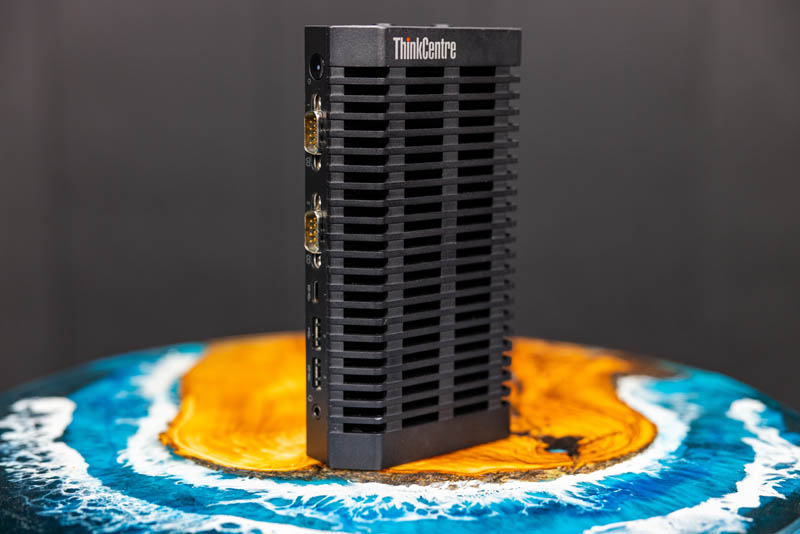
With only a single 1GbE NIC it would be hard to say for $188 we could call this a good option for a firewall.
The second SSD slot adds some functionality, but this is probably not the ideal NAS solution. Our sense is that most will use this as an IoT node instead of as a primary desktop. This unit did not come with a Windows 10 license so that, combined with the general CPU performance, will probably keep one away from using this as a desktop. We tried it with Ubuntu 20.04 LTS desktop and it was not a great experience. Treat this more like an edge server.

The appeal of this unit is clearly the passive chassis and low power design. When we compare it to the M90n IoT, this unit uses less power (4-17W was our range during all of our testing versus 5-25W on the M90n IoT) and was $12 less expensive. It left us wondering if that $12 was worth giving up CPU performance, a front USB 10Gbps port, rear 1GbE port, and a Windows 10 license. Even if you are not planning to use the Windows license, it is still nice to have for virtually no additional cost.
We will note that the M75n non-IoT is inbound so we will have that as a comparison point soon as well.
Final Words
Overall, this is an interesting little system that is frankly made more interesting based on the power and pricing. At $400 this would be a tough sell. At $188 it feels somewhere around the right price. We have to recognize that not everyone needs the highest power and densest compute everywhere. This almost feels like a Raspberry Pi alternative except made from an AMD Dali platform with Zen and Vega rather than Arm. The chassis is also significantly better made than the average Raspberry Pi chassis we have used, and one gets an on-site warranty and support with this as well.
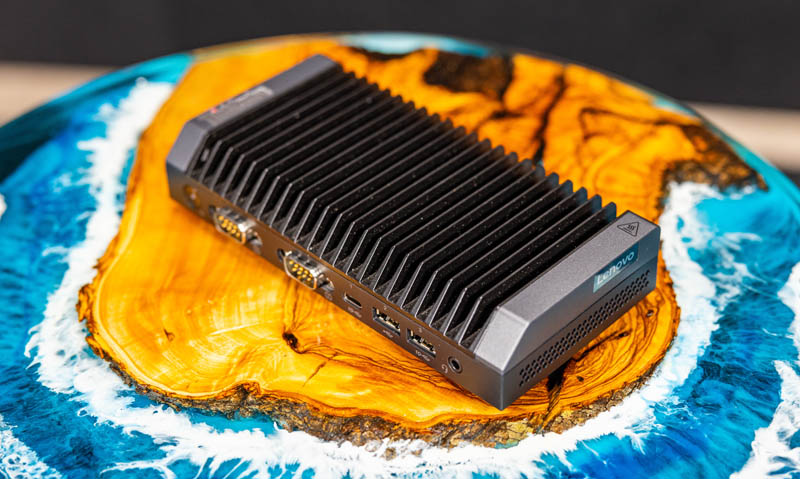
Balancing capabilities, cost, and performance is always a delicate act. Lenovo did a good job here in general, but it is very focused on that IoT segment. Then again, it says IoT in the name so perhaps Lenovo nailed it perfectly with this one. The one area that we wish Lenovo would change on future versions is the ability to use standard SODIMMs with the machine. Shock and vibration concerns are mitigated somewhat given the M.2 slots are being used anyway. Using a 4GB machine is great for many use cases, but we can see cases where people would want to trend higher.
Overall though, if you want a lower-cost and lower power fanless x86 box, this is certainly an intriguing option especially since it uses a larger core not an Atom-class core at 6W. Lenovo did a great job with the M75n IoT offering something different in this segment.


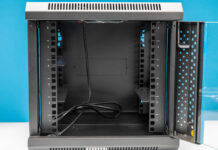

In my view in this segment the big missing feature is the ability to power the device over PoE. Even a RPi can be powered over PoE when using a hat.
Hopefully Lenovo and others will release a different version that can be powered over PoE.
Where are you finding it for even remotely near the prices quoted in the article?
Hey James. There are specials all the time on these. You just have to keep an eye out on different channels.
I bought this device over a year ago during one of Lenovo’s sales offers. It does support LTE WAN with its SIM card slot and WWAN slot. The CPU is weak and some tests are faster than a Pi4, some are slower. The “value” in this device is that the case is already there with the requisite ports. If you can except a Pi with 4Gb of RAM then this will work fine. If you think of this as a desktop you are looking at the wrong thing.
As of today this device is just north of $386.99
I’ve used 3 Pentium J5005 based Mini-ITX boards from ASrock to create a 100% passive oVirt cluster with 32GB of RAM and 1TB of SATA-SSD for each. I upgraded the network to 2.5Gbit using USB3 based RealTek adapters.
The ASrock boards have a largish heatsink, which in a perforated Mini-ITX seems quite capable of never getting these 10 Watt Atoms to throttle: Prime95 runs them at 2.8GHz for hours and only adding Furmark on top will show some lowered clocks.
They’ve been running 24×7 for two years now and I only occasionally vacuum dust from the tops, so I quite like the form factor and see little practical advantage to going NUC size, except availability of hardware.
I’ve been looking around for potential upgrades, e.g. Jasper Lake or Gracemont but these are “paper-only” products these days.
Also got another cluster using G8/10/11 NUCs using NVMe SSDs, TB3 10Gbit NICs and 64GB each, but they are much tougher to keep quiet, playing with power and fan settings, with a Mini-ITX base board and Noctua fans, it would be much easier (proven by a 35Watt TDP i7-7700T running as firewall).
Of course a “15 Watts” TigerLake just about eats the three “10 Watts” Atoms for breakfast, but when it does, it also takes more like 64 Watts from the lines, while the Atoms can be trusted to stay on budget.
@peter laurens : for low watt device like this you can use POE texas ‘s poe injector for non poe device.
I’ve been using it with nuc5cpyh for a viewing station for awhile now, it’s even strong enough to power that nuc + 16 inch usb monitor + usb speaker. The catch is you have to mod the power cable, but it can easily be done on electric shop